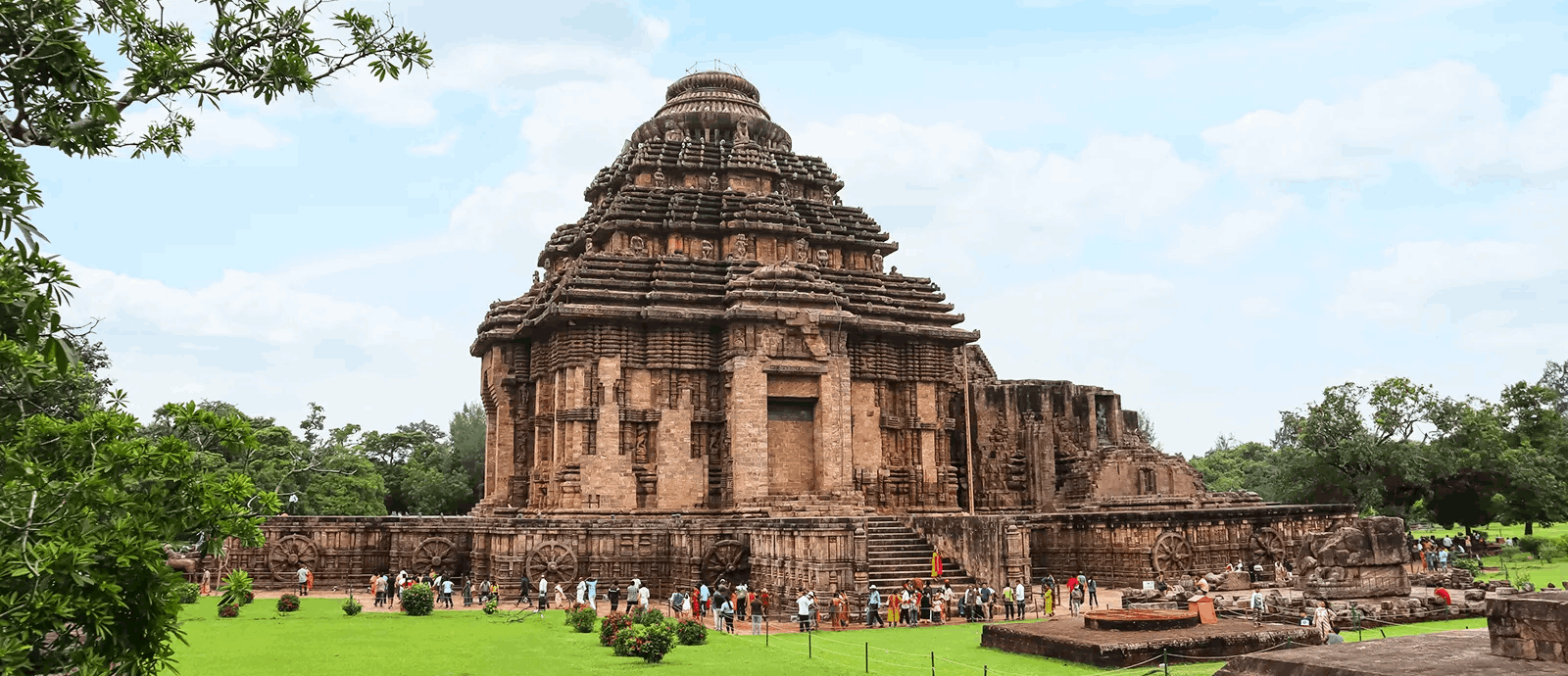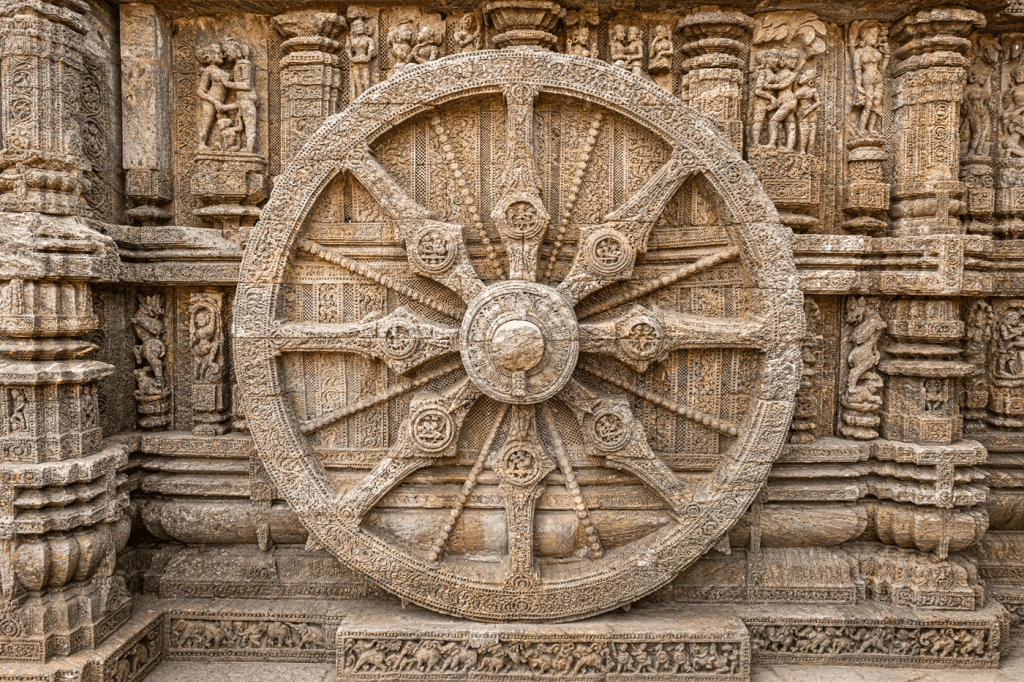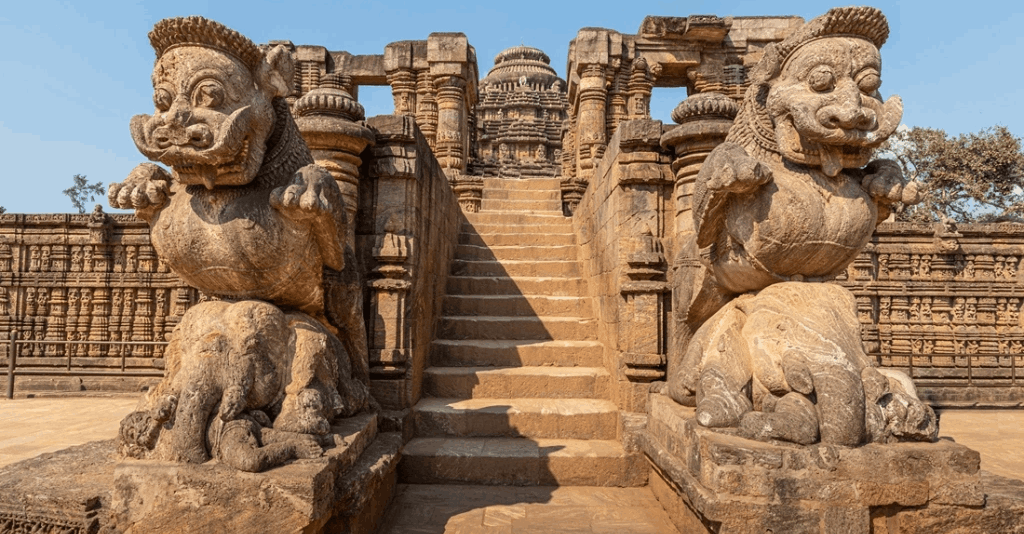The Sun Temple , often simply referred to as the Konark Temple, stands as a monumental testament to ancient Indian architecture and religious devotion. Located in the Indian state of Odisha, this 13th-century temple is dedicated to Surya, the Sun God, and is renowned for its grandiose structure, intricate carvings, and historical significance. This article delves into the rich history, architectural brilliance, cultural impact, and current status of the Konark Sun Temple , unraveling the story of one of India’s most iconic temples.
Historical Context
The Konark Sun Temple was commissioned by King Narasimhadeva I of the Eastern Ganga Dynasty in the early 13th century, around 1250 CE. This period in Indian history was marked by a flourishing of art and architecture, with significant contributions from various dynasties across the subcontinent. The Eastern Ganga Dynasty, under King Narasimhadeva I, was particularly noted for its patronage of religious and artistic endeavors.
The temple’s construction was likely motivated by both religious devotion and a desire to establish a grand symbol of the Ganga Dynasty’s power and prestige. The Konark Sun Temple, dedicated to Surya, reflects the king’s commitment to the Sun God, who was revered not only as a deity but also as a symbol of power and vitality.
Architectural Marvel
The Konark Sun Temple is celebrated for its extraordinary architectural design, which is a remarkable example of Kalinga architecture. The temple is designed in the form of a massive chariot drawn by seven horses, symbolizing the Sun God’s celestial chariot. The chariot’s wheels, which are intricately carved, serve as sundials, showcasing the temple’s sophisticated understanding of astronomy.
- Main Structure: The temple’s main structure consists of three distinct parts: the Jagamohan (the assembly hall), the Natmandir (the dancing hall), and the Garbhagriha (the sanctum sanctorum). The Jagamohan is adorned with elaborate carvings and sculptures, depicting various deities, celestial beings, and mythical creatures. The Natamandir, though now mostly in ruins, once served as a space for devotional dances and rituals.
- Sculptural Details: One of the most striking features of the Konark Sun Temple is its intricate sculptural work. The temple walls are adorned with detailed carvings that illustrate various aspects of daily life, mythology, and religious symbolism. The carvings include scenes of courtly life, erotic sculptures, and depictions of the Sun God’s journey across the sky.
- Engineering Ingenuity: The temple’s engineering is equally impressive. The wheels of the chariot are not just decorative but functional, serving as accurate sundials. The entire structure is oriented in such a way that the first rays of the sun illuminate the main entrance and the sanctum sanctorum, reflecting the temple’s astronomical significance.

Cultural and Religious Significance
The Konark Sun Temple holds immense cultural and religious significance. It is not only a symbol of the architectural prowess of ancient India but also a representation of the profound relationship between astronomy and spirituality in Hinduism.
- Sun Worship: The worship of Surya, the Sun God, is an ancient practice in Hinduism, symbolizing health, wealth, and prosperity. The Konark Sun Temple serves as a central hub for Surya worship, and its construction reflects the deep reverence that ancient Indians had for celestial bodies.
- Festivals and Rituals: The Konark Temple was historically a center of various festivals and rituals dedicated to Surya. The most notable festival associated with the temple is the Konark Dance Festival, held annually in December. This festival showcases classical dance forms from across India and celebrates the rich cultural heritage of the region.
- Literary References: The temple has been referenced in various historical texts and literary works, emphasizing its importance in medieval Indian culture. It has inspired poets, scholars, and artists throughout the centuries.

Challenges and Preservation Efforts
Over the centuries, the Konark Sun Temple has faced numerous challenges, including natural wear and tear, environmental factors, and historical conflicts. The temple’s exposure to the elements and the effects of erosion have caused significant damage to its structure and carvings.
- Damage and Restoration: The temple was partially destroyed by a series of natural calamities, including storms and earthquakes. During the British colonial period, efforts were made to restore and preserve the temple, although many of the original features were lost.
- Modern Preservation: Today, the Archaeological Survey of India (ASI) is responsible for the conservation and preservation of the Konark Temple. Various restoration projects have been undertaken to address the damage and to protect the temple from further deterioration.

Conclusion
The Konark Sun Temple remains an enduring symbol of India’s rich cultural and architectural heritage. Its grandeur and intricate design continue to captivate visitors and scholars alike, serving as a reminder of the ingenuity and devotion of ancient Indian civilization. As efforts to preserve and protect the temple continue, the Konark Sun Temple stands as a testament to the timeless beauty and spiritual significance of India’s historic landmarks.
